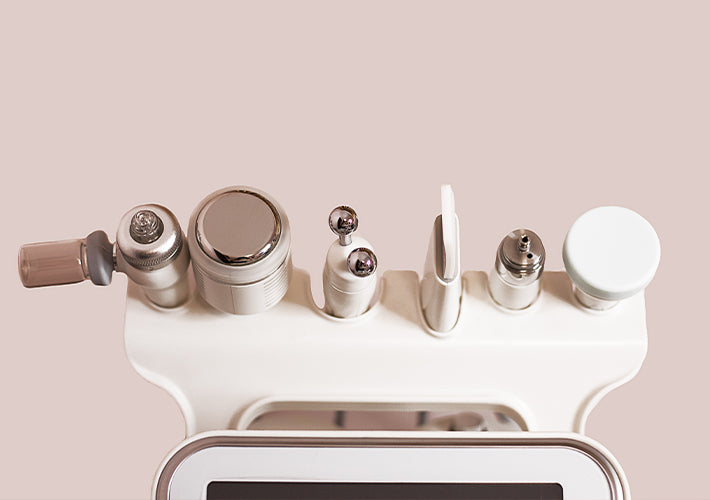
SMART Purchasing
Posted by Terri Wojak on
The use of devices in aesthetics can boost results and build your bottom-line. Aesthetic providers are constantly inundated with new products, treatments, and devices, all claiming to be the next best thing. With all the technology available today, how do we choose? Each company boasts superior technology, quicker results, and longer lasting effects. It is important to do your own research and determine the efficacy of the products and services you provide. Prematurely endorsing an ineffective or unproven device can be damaging to your business. Here are the Five Steps to Making a SMART Purchase: Safety, Maintenance, Affirmation, Research, and Takeaway (ROI).
Safety
First, make sure that your license allows you to operate the device that is being presented. Assuming that it is legal, check that the device is FDA cleared. This alone doesn’t mean caution isn’t necessary; there are devices that have been cleared by the FDA that show little to no benefit or even cause more harm than good. Make sure the device you are considering is from a reputable manufacturer. The manufacturer should offer proper training on the use of the device; if the company doesn’t ensure safe use by their providers, then safety may not be important to them overall. Even if the device seems easy to use, there is always a chance of complications.
Maintenance
Whether it is a new device, or one that has been on the market for a long period of time, ensure that the company representatives will make themself available to you after you’ve purchased. Representatives should be accessible for continued education, as well as product and sales support. While product representatives have good reason to support their accounts and help market for continued sales, device salesmen, on the other hand, are often known for their “love them and leave them” approach.
Affirmation
Any new device you are considering offering to your clients should be compared against similar devices that have been tried in the past. Is it a similar device that was introduced last year? If so, what type of results did you or your colleagues see? Were there any complications reported? Looking to the past will often help you predict the future. For example, iontophoresis has a proven track record of effectiveness for product delivery, therefore, a device containing iontophoresis would likely hold more weight than a newer technology.
Research
It is the job of the provider to research the safety and efficacy of any device considered for use on clients. There are many resources accessible through the Internet, including user and patient reviews. It is also helpful to get in contact with peers who have experience with the equipment in question to receive feedback from a trusted source. Representatives should have clinical studies, scientific evidence, and before and after pictures available. As a professional in the industry, it is your job to do your homework and investigate any devices you consider offering to your clients.
Takeaway (ROI)
Regardless of a device’s potential benefits, it would be an unwise decision to purchase a device that will not increase your business’s revenue. Having an expensive device that provides mediocre results would not be beneficial. Get information before the purchase on the cost of maintenance, disposables, warranties, and repairs. Some devices have a hefty price tag along with consumables that require regular replacing. Having this information available ahead of time is important to determine your potential return on investment (ROI). As a purchaser, you must always be aware of the bottom line. If you are considering adopting a new device, be certain you fully understand the treatment you are offering. Remember your clients seek your expertise because they trust that you know what is best! Use the SMART purchasing method next time you are looking to add a new device to your practice.
Share this post
- Tags: Advice
